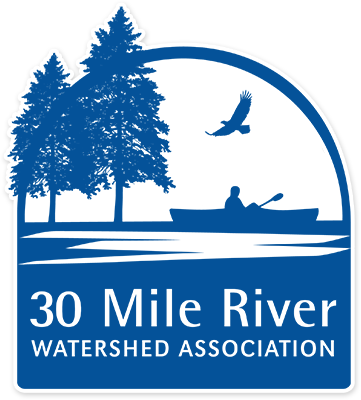Cyanobacteria rely on three things to grow: light, temperature, and nutrients.
When it rains, water flows downhill over the land, into ditches, streams, and the lake. Along the way, this stormwater runoff picks up phosphorus, the nutrient that most influences the growth of algae in lakes. Phosphorus is found in very large amounts on land surrounding the lake – in soil, fertilizers, animal waste, septic systems, and other sources. Very small amounts of phosphorus are found naturally in lake water, and this is important for a balanced lake ecosystem, but even the smallest increases in phosphorus can cause substantial increases in algal growth.
Another significant source of phosphorus is the sediments at the lake bottom. In the summer, low oxygen levels in the deep waters of the lake can cause a chemical reaction to occur in the sediment, where phosphorus is released into the water — a process known as “internal loading”. When too much phosphorus is in the lake, excess algae growth occurs.
Cyanobacteria also thrive in warm, slow-moving waters, and typically grow faster when temperatures are warmer, as they have been this summer.

This article was included in 30 Mile’s August 2024 newsletter. To view the full newsletter, click here.
